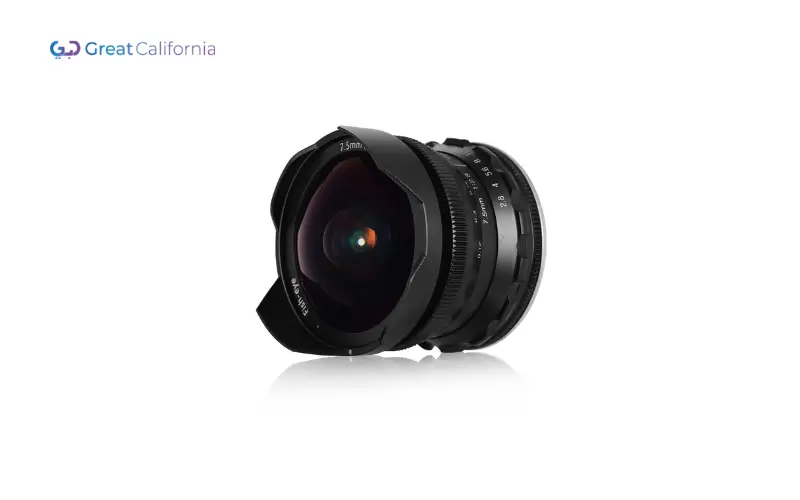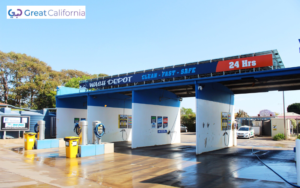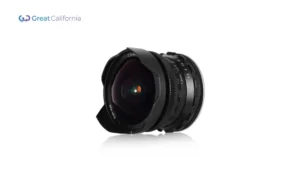What is Central Aperture E49?
Brief Background on Central Aperture in Lenses
The Central Aperture E49 describes a very specific concept involved in the designs of optical systems which it concerns the amount of light that can pass through a lens. The lens is a ring that surrounds the aperture, in lens technology, the aperture is a small opening in the lens, and it can be manipulated in terms of size. In high-end cameras, telescopes, and microscopes, the E49 aperture is preferable because of accurate control over the light entering.
E49 and Its Role in Optics
Using the segmentation technique, the E49 optical design allows perfect light control and picture clarity and focus. It should therefore be expected that this high degree of regulation of light makes this material very effective in highly sensitive imaging systems. The central aperture is the core piece enabling professionals to get the right exposure and clear visualization, which is critical in lenses and other optical supplies.
Does the E49 Central Aperture Operate?
Mechanism Behind the Aperture
The Central Aperture E49 operates while manipulating the light through the lens together with different exposure settings. This is done through the control of the aperture size with which the amount of light in the optical system is defined. Aperture also plays an important role, a large aperture means that more light can enter the lens a small one means less light and determines the final picture.
How does the E49 Aperture Influences Image Quality?
Specifically, the aperture size in E49 has a blow on the image quality being produced. An objectively greater aperture collects more light, helpful in cases of low light, meanwhile, a subjectively greater aperture collects less light and gives more objects in the scene a ‘useful’ focus, or depth of field. This capability makes the E49 lens opening inevitable for regulating the intensity and acuity of focus in different photopharmacological and scientific usages of lenses.
Pros of Central Aperture E49 on Lenses
Enhanced Light Control
In fact, the first benefit that can be easily noticed while using the E49 Aperture is advanced dimensions in light control. Organic PVs can be controlled to the level of a picture’s photographers and optical engineers, which enables them to regulate the structure’s lens aperture, making it possible for the structure to take pictures in any light.
Precision in Image Clarity
The E49 lens opening ensures that high optical realizations are achieved to facilitate the provision of clear images despite the complicated terrains. This precision will prove beneficial to professional photographers and scientific users where accuracy is incredibly important. Depth of field is easily manipulated, allowing for more of an emphasis to be placed on one or more subjects while keeping everything else out of focus, making for good-looking pictures.
E49 Aperture in the Modern Gadgets
Cameras and Photography
The E49 Aperture is widely applied in cameras and photography since it includes the necessary possibilities to control the light when photographing or filming. This provides the ability photographers to control the aperture size, E49 where more or less light is allowed to penetrate onto the lens exploiting great clarity on the images. This is particularly handy for photographers who require high levels of accuracy of focus in ordinary as well as in low light conditions.
Smartphone Lens Technology
The utilization of E49 Aperture is moving to smartphone lens innovation. Today the E49 lens opening is installed in modern efficient smartphone cameras having an aperture and sensors. This aperture also enables the reception of high-quality photos in compact appliances and improves the performance in mobile photography.
Optical systems and telescope systems
Besides cameras, the framework of E49 optical design is also applied to telescopic facilities as well as all other optical appliances. Due to its mechanisms of controlling light input and maintaining ca lear image, it is suitable for usage in scientific research whereby accuracy and focus are crucial.
Knowing the Aperture Size E49
Optical Systems
Aperture size E49 is an important factor in the construction of optical systems. He determines how much light reaches the lens and directly affects the depth of fields and the exposure. Openings admit more light but deem the field of depth, while those that are small only let in a little light but broaden the amount of focus.
How does E49 Aperture Size Compare to Other Aperture Size?
Of all the aperture sizes we have explored, the E49 aperture appears to hit the golden middle between light management capabilities and image sharpness. Some cameras have greater or lesser aperture value but the aperture of the lens for the E49 is optimal and appropriate for both spots, also achieved with high quality. What makes it efficient in many professional optical systems is that it supplies consistently high-quality images.
E49 How Aperture and Focal Length Works
How Aperture Controls Focal Length?
E49 Aperture directly relates to the focal length of the lens. The size refers to the ability of the lens to capture light and therefore focus and the zooming ability of the lens. More aperture corresponds to less depth of field and vice versa; a small aperture, on the other hand, corresponds to the larger depth of field and a clear image.
E49’s Impact on Depth of Field
The E49 aperture is especially handy if the focus on field depth in different shooting situations is needed. Thanks to a smaller aperture, it becomes possible to enlarge the depth of field, and therefore, more objects will be in focus. On the other hand, using the larger E49 lens opening makes it possible to take a subject with a nice blurred background.
Fine-tuning the Aperture of the E49
User Intervention vs. Automation
The E49 aperture can also be set in a manual way and in a way adapted to the lens system. In reality, the aperture must be adjusted manually so that photographers can enroll in complete control over the exposure, which is good for certain creative purposes. Continuous control is less characteristic of contemporary systems, as the size of the aperture is changed depending on the existing lighting.
Optimization for Specific Tasks
Whenever the shot is out of focus sharpness is the only solution and for such experts in photography, adjustment of the E49 aperture is the epitome of perfection. With regards to portrait, landscape, and macro types of pictures, the central aperture facility enables one to adjust to the prevailing light environment towards creating the intended shot. Due to this flexibility, the E49 aperture is one of the most benefits of the optical systems.
Central Aperture E49 Has and How to Solve Them
Lens Obstruction and Dust
Dust or dirt which might affect lens obstruction may affect the functioning of the E49 aperture after some time. Dust obstructs the lens and makes it form blurry spots or can actually reduce the amount of light getting into the system. This problem can be reduced by regularly cleaning and using protective covers.
Calibration Errors
At other times, the E49 Aperture may be out of calibration and therefore the wrong exposure or blurriness may result. If this happens, adjusting the lens if you are a first-time user or taking it to a professional service will do wonders to eliminate the problems thus making the aperture size E49 work properly.
Future Trends in Aperture Technology
New Ideas in Aperture Design
Further innovations are anticipated in the next-generation aperture technology and the E49 aperture will be central in this future development. As an example of adaptive apertures, they could further provide individual control of the aperture settings, depending on the real-time operation of the light, hence providing photographers with improved, easy-to-use control of exposure.
Next-Gen E49 Systems
As for the future, the optical design of the E49 will probably change in the following way, namely turn into a more compact and efficient one. New materials and technologies that may be released in the future may enable even more fine-tuning of the mechanism, which will work for both performance enhancement as well as increasing the convenience of its use. Future E49 aperture systems of the same type will probably be designed both for handheld gadgets like mobile and tablets as well as for complex scientific and research equipment.
Which one is better Central Aperture E49 or Other Aperture Systems?
Comparison of the Subject Aperture Sizes
In comparison to standard aperture sizes, the aperture mechanism and size of E49 is more preferable and precise. Although on simpler occasions other apertures may hold the day, the E49 lens opening affords more control on exposure and final look. It is much preferred by people who need higher performance you could say.
Strengths and weaknesses
Compared with the E24 and E32 apertures, the E49 aperture offers superior control of light passage, image clarity, and depth of field control, which explains why it is suitable for high-performance optical systems. Nevertheless, it has several disadvantages such as potentially having a more complicated operation in comparison with simpler aperture systems and being more expensive. However, the benefits of the E49 lens technology are that place it among the favored professional grade optics.
Frequently Asked Questions (FAQs):
What is the application of Central Aperture E49?
The E 49 is a lens central aperture that is mainly applied in a sophisticated optical design to regulate the lens aperture or the width of the hole through which light enters.
What happens to the clarity of the image in an E49 Central Aperture?
The E49 aperture size in ‘control’ of the light entrance, with added details in sharpness and depth of field, are significant in photography and microscopy.
Can the E49 Aperture be used for any type of lens?
However, the choice of an E49 aperture in many modern lenses is possible; compatibility is determined by the lens. Omega is mostly used in high-performance optical systems.
The E49 Aperture can it be manually adjusted?
Indeed, it is possible to remove the E49 aperture and adjust it for shooting or observation on some lenses.
What would you stand to gain when deciding to purchase the E49 Aperture?
The most important advantages are better control of light, higher resolution, and better focus control in the optical system.








